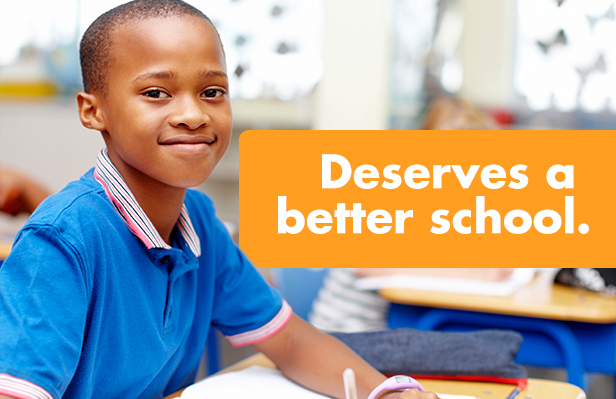Media

Safe Schools and School Choice
It’s back-to-school time. For parents, sending children into someone else’s care can be bittersweet. We want our kids to experience the wonder of learning and the joy of play. But most of all, we want them to return home safely.
Tragically, news coverage of bullying, abuse, and school shootings can lead parents to fear for their child’s safety. According to the 2016-17 Safe Schools Statewide Report, Pennsylvania schools reported over 43,000 incidents of violence, including acts such as assault, bullying, and sexual harassment.
For perspective, Pennsylvania was named in the top 10 “States of Concern” by Educator's School Safety Network’s 2017-18 report of school-based violent threats and incidents. Just 10 states reported 51 percent of all violent incidents and threats against schools. Pennsylvania was number five.
Graphic:Pa Safe Schools Data FY 2016-17
Former Dropout Prevention Coordinator Brad Trostle saw “anything and everything under the sun” during his 19 years at New Oxford in the Conewago Valley School District, and offers a valuable perspective on school safety and solutions.
Trostle emphasizes the importance of student body engagement, community engagement, and mentorship to build trust with the students, steering them towards graduation and successful adulthood. Trostle believes a “sense of belonging and camaraderie” can mitigate violent tendencies in students who come from families rife with alcohol and drug abuse, physical abuse, and criminal activity.
“Project Harmony” was started to create that sense of belonging for students. According to Trostle, the student support group allowed participants to transition from “having feelings of being an outsider to a sense of belonging and being a member of the school community.” Trostle emphasizes engaging troubled students, but also giving them options; a path forward.
New Oxford Career Counselor Joe Connolly likewise highlights the connection between educational options and individual student engagement: “In the past with fewer options they were more disengaged.” To create those options, schools such as New Oxford and Garnet Valley High School in Delaware County offer robust arrays of blended, online, and alternative learning plans.
Sadly, many students cannot access options.
Marginalized students, when presented with an alternative that meets their needs, may be less likely to act out. In fact, multiple studies positively link private school choice with school safety. Milwaukee parents who received tuition vouchers were 48 percent more likely to report their children as “safe in class.” D.C., New York, and Dayton, Ohio parents who received vouchers were less likely to report fighting, vandalism, and racial conflict.
All students are different and all schools are different. The ideal recipe of discipline and security at one school may not produce a safe environment at another—hence the vital importance of parental choice.
Florida has embraced this approach with the Hope Scholarship program. Victims of bullying or students who are attacked in school may use Florida’s Hope Scholarships for private school tuition or to transfer to other public schools.
Pennsylvania already has the framework for student choice, which students could utilize to pursue a safer learning environment.
Pennsylvania already has the framework for student choice, which students could utilize to pursue a safer learning environment. The tax credit scholarship programs, Educational Improvement Tax Credit (EITC) and Opportunity Scholarship Tax Credit (OSTC), empower thousands of families and students each year to enroll in private school—yet thousands more are turned away due to program caps.
Senate Bill 1204, sponsored by Sen. Mike Regan and House Bill 2530, sponsored by Rep. Kristin Phillips-Hill would establish automatic escalators for the EITC program. This would allow the EITC program to meet demand, ensuring more students will be able to attend schools that best meet their individual safety needs.
We can help even more kids by implementing an education savings account (ESA) program. Senate Bill 2, sponsored by Sen. John DiSanto, would provide ESAs to students in underperforming schools and House Bill 2228, sponsored by Rep. Judy Ward would offer education savings accounts to students with special needs and gifted students.
School choice raises academic outcomes, improves public schools, and saves taxpayer money. But, more fundamentally, choice can keep more kids safe. As Brad Trostle put it, offering kids an alternative to their current mindset or learning environment “could save their life.”